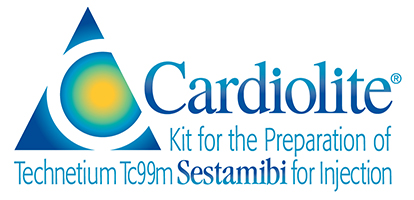
Imaging Protocols
Suggested Cardiolite® One-Day Rest/Stress1,2
Using this protocol, you can complete imaging in one day. A low-dose Cardiolite® rest study is followed by a higher-dose stress study. The higher dose Cardiolite® in the stress study overcomes the lower dose of the rest study, permitting high-quality gated SPECT imaging.1,2
Rest Portion- Inject with 10 mCi of Cardiolite®
- Administer rest injection 60–90 minutes prior to imaging
- Upon completion of rest imaging and review for quality approval, the patient may be prepared for stress testing. Patient should wait 1–4 hours from injection before proceeding to stress portion
- Patient undergoes exercise or pharmacologic stress
- Inject with 25–30 mCi of Cardiolite® at peak (exercise) stress, or at the specified time if a pharmacologic stress agent is used
- Begin exercise stress scan 10–60 minutes after Cardiolite® injection
- When using pharmacologic stress, begin imaging 45–60 minutes after Cardiolite® injection
One-Day Rest/Stress Algorithm
Rest Portion
Stress Portion
- The rest image represents a true rest perfusion image because the patient has not previously been stressed
- One-day protocol offers convenience for patients and rapid availability of results
- Preferable when using a 1-day protocol with a short time interval (less than 2 hours) in between
- Note that using a dose ratio less than 1:3 will necessitate increasing the time interval between the two injections1
- Rest/stress protocols are now perfomed almost universally with no delay between the rest and subsequent stress images.1
- Image acquisition can be repeated if there is significant patient motion or instrument malfunction
- The ejection fraction is a post-stress EF, not a stress EF, since the image acquisition occurs after the exercise
- Henzlova MJ, Duvall WL, Einstein AJ, et al. ASNC imaging guidelines for SPECT nuclear cardiology procedures: Stress, protocols, and tracers. J Nucl Cardiol. 2016;23(3):606-39.
- Cardiolite® [package insert]. N. Billerica, MA: Lantheus Medical Imaging.


